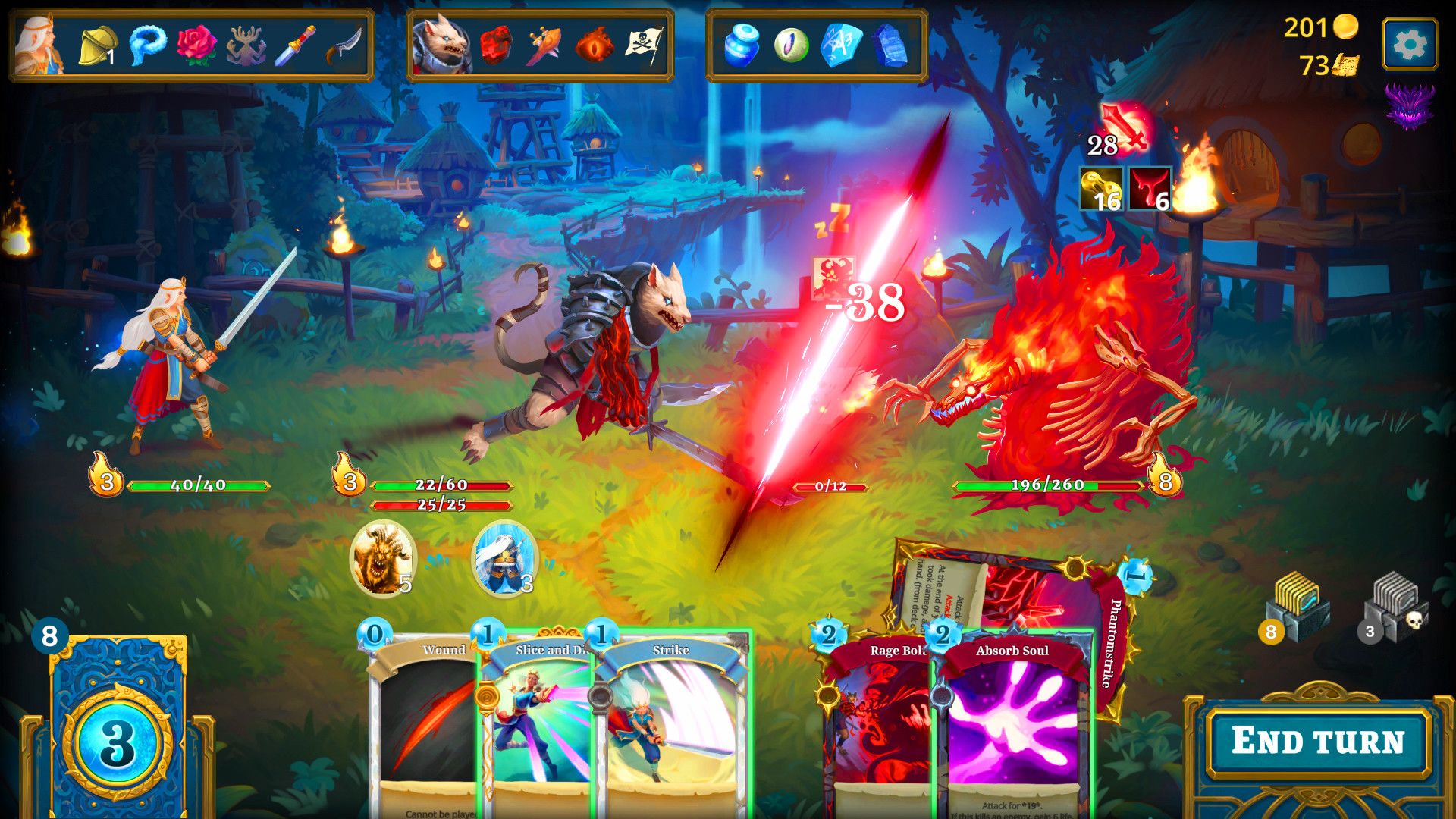

There are some that uncover a line of three to four tiles in front or front and back, as well as ones that can just uncover one tile at a time.

You’ll be given five ink pots at the start that uncover a batch of tiles around you, and winning battles can unlock different kinds of ink pots. There is also a strip of tiles that go from where you start to where the boss of the chapter is, usually with a couple battles in between.

A set amount of tiles will start uncovered already, usually displaying either towers that can open more tiles for free, or various battles around the pages. Essentially, each page of the storybook you need to progress through is tile based. Progression feels more rewarding, with a different way to improve your deck and overall runs, and the entire open-world concept is very refreshing, although Tainted Grail also dipped into this recently.Let’s start with the basic concept of how Roguebook works. It does plenty differently, and better, than the game that looms over it. In fairness to Roguebook, comparing it endlessly to Slay The Spire doesn’t do the game justice. The game does get harder as you progress through the tiers, although nothing has quite got me pulling my hair out like an Ascension 18 run (the highest I’ve ever got) of Slay The Spire. Roguebook’s Epilogue system is basically its Ascension difficulty. This sort of leaves you feeling like you should just stuff your deck with cards, meaning you often stumble into a successful deck rather than craft it, like in Slay The Spire, where card choice is the entire foundation of the game. In a genre that relies on its replayability, that lack of difficulty is actually one of Roguebook’s biggest weaknesses.Ĭard removal doesn’t exist, and in fact, much of the strength of your deck comes from the sheer number of cards inside, with unlockable talents based on the size of your deck. Balance and difficulty.Ībrakam, the team behind the game, has already made some good balance changes at the time of writing, but there are things about the game that make it feel much easier than its challenging compatriots. This leads us to one of my biggest problems with the game. It’s a great addition to the strategy of choosing cards to also have to think about how you’re going to progress through the overworld. Every chapter has different monsters and a boss fight at the end, and each has to be explored by using paints and inks to paint the pages of the giant book you find yourself inside. The style and charm of the characters is one of Roguebook’s defining qualities.Įach run plays out over the course of three chapters. There are different options and playstyles available to each of the heroes – Sorocco, the angry toad-pug, styles on enemies with defensive plays, whereas Aurora, the mystical old turtle lady, summons frogs and protects her allies. Instead of a solo character, you play with two in Roguebook. RELATED: Lords Of The Fallen Sequel The Surge 2 Due For Release This Year, Screenshots Released By Deck13 Interactive Roguebook does do some things differently, and I should preface this by saying that I’ve enjoyed the game. RELATED: Nintendo Switch Owners Can Finally Play All Four Seasons Of The Walking Dead And Soon Steam Users Can Too Just this year we’ve already had Tainted Grail and Loop Hero, and now it’s the turn of Roguebook. A quiet genre that has been picking up steam ever since the massive success of Slay The Spire, a game that for many still sits atop the throne of its genre. Quickly amending their mistake, Roguebook was allowed to flourish with more positive reviews. Roguebook came roaring out Early Access with an instant controversy: developers that offered day one paid DLC as if they had never seen that go horribly wrong before.


 0 kommentar(er)
0 kommentar(er)
